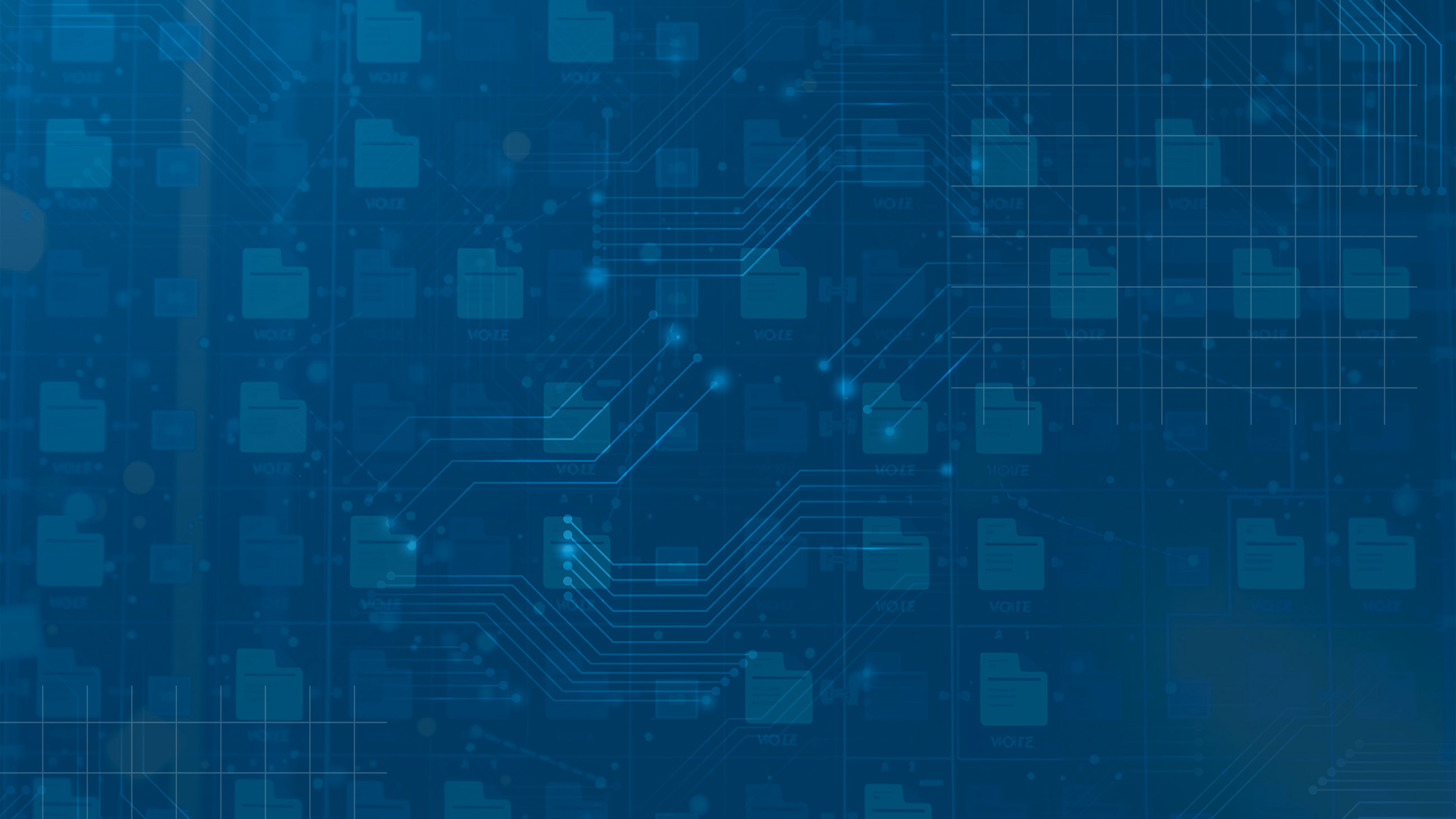Downloadable Resource
Blog
Webinar Recording
Success Story
Article
Technical Article
Video Insight
Trade Show
Webinar
Tutorial
Video Demo

HRMS HR and Payroll Differences from Sage Abra Demo
Join us on
May 6, 2015

Download Now
Event Details
Price:
$
USD
Location:
Virtual
Address:
Transcript:
"Sheri:
Today's sneak preview, presented by Kathy Pangborn, is a recording of a live demonstration recently done for one of our Abra clients.This is a perfect summation that outlines the differences you will encounter when you migrate from the old Abra suite product to the new Sage HRMS SQL based product. We join this demo in progress with Kathy now.
Kathy:
The touch and feel is primarily exactly the same with couple additional features that they've added. Any customization that you have on the HR side right now and any Crystal Report that you have functioning on the HR side right now will still function from a structural standpoint. Now, you know,you may have to use ODBC connections or connecting may be different, but structurally it will be the same from the HR perspective. So we still have HR personnel out there; we still have all those tables that you know and utilize.When we go to the payroll side, that's where it becomes significantly different. So what I do want to do is just take a couple minutes to point out some of the things that are different. And they're not—there's not a huge list of them. First of all, for example, when I pull up an individual, we have a new search feature, and it's called "Go To." You guys are all familiar with the "Find" button that you can come out here, and you can view more options, and you can manipulate this and kind of really filter this down,and it'll put it in a certain order for you. So when you do select that person,you can just go next next next next, and there's all that information. All of that is exactly the same. But we do have this new button called "Go To,"and it's pretty convenient. So, for example, I can go to, and I could just type in a name, and it pulls it up, it looks at all of these clickable fields, and it'll take me straight to Barbara Smith.
So that's one of the new differences, but you also have an additional email address. This is exceptionally handy when we talk about the Employee Self Service system, and the alerting system, one of your questions was, 'how do we send out these notifications' well we typically can email those to the individuals. In the past, you only had one email address, so now having two, we can send it to a work address, and possibly a personal address as well.So they've added an alternate email address. If you currently are utilizing attendance information. They have added an additional date field in the attendance summary functionality that is different than the adjusted seniority date. Okay, we always had to share. So now we can have a calculate service as of date, so that's something new that can be set up within the attendance plan.So those are some of the changes that we've seen on the HR side, you still have all of the exact detail pages that you know and use, you still have all of the existing reports that you utilize. A couple things that we've also seen is, for example, like in the OSHA area, there's, they've added a little bit more also to the workers comp field I believe there's an extra, extra field inside here too, which would really assist with the compliance. The other areas that you will see some changes as well is in the current job. We have some extra fields in here that assist with affirmative action plans, such as like your pay equity job group. There is a EEO function in there as well. So as you can see, this is very similar to what you're used to. In the current Abra suite HR. All of your standard reports on the HR side are still there, as well as your Crystal HR reports; also,we'll migrate over. We do have to just do one connection change in the back end,which is very simple. So any custom Crystal Reports that you have built on the HR side will continue to be usable within HRMS.
If we change directions and we go on to the payroll side. A couple things I want to point out we'll start kind of in the details area first.When it comes to the payroll and HRMS, it is significantly different, and as you know, I've worked on payroll, with Abra suite for many many almost 20 years now. It's kind of scary to say that out loud, but it is a much more simplistic process. With the Abra suite functionality on the payroll side, we were always concerned about cross balancing, you know running all the multiple reports and really tying all those reports together. When we move to the HRMS product, it's a much more simplistic process. Where you had all of those detail pages on the payroll side, we have one called employee payroll.
And you will see that we have this general information that pulls over just the kind of demographic type info that you're used to seeing.We have a couple other ones here that help us with position and kind of the equivalent of what we would call maybe organization codes. We have a tab that assists us with some cost center, which primarily drives our general ledger.Then we have this pay tab, and this pay tab is the equivalent of what you know today as your employee deduction, your other earnings, and actually, even your time sheet earnings all sit on inside this pay tab.
This is where we can see the current pay information of how many hours. We can see that overtime calculation, their functionality, but here's all of the different pay types that they're eligible for. And all of that is stored right inside here. We also have the same area for taxes. So, for example, if I come down to my US fit. I can look at the details and see that this person is filing a single zero, same functionality that you're used to having inside Abra suite, we have that in HRMS just packaged a little different. For example, our direct deposit. This is what we call the EFT, so let me see if I can find somebody that has—there we go! Here's my direct deposit setup, very similar as what you would expect in Abra suite, and obviously some additional work, location, we have the EFT functionality to be able not to do only direct deposit but also to do like Child Support submissions as well. So this looks very familiar maybe packaged a little different but same concept where it is different--
Questioner:
For the Ernest, tab does it calculated for you? Or do you guys still have to calculate it and then just enter it?
Kathy:
Great question because that's a pain today, isn't it.
Questioner:
It is
Kathy:
And that's a great lead way right into where we're going next, and this is my payroll process, and you'll see I have this garnishment manager, tab right here. And what this feature does is it will take your entered Child Support garnishment loans, etc. and it will calculate that, and give them the minimum disposable income necessary. So it does calculate it for you. And I'll pull that screen up here in just one second and show. Another feature that I really liked about this system compared to—and it sounds like I'm really kind of dogging Abra suite with quotes in the air, and I really am not. But just to really show an example of the difference between the two, the current system that you have right now, whenever HR makes a change on the HR side in Abra suite, it is instantly into the payroll side. And so it's very typical that we tell clients—just for precautionary purposes, not necessarily require you know hardcore requirements—if we say, you know, HR just stay out of payroll while they're processing. Right, because it's just easier when we'rerunning final payroll, HR just stay out.
Questioner:
Yeah, that is an inconvenience!
Kathy:
It is an inconvenience you're exactly right that goes away here. And the reason why is because of this open payroll button. So all of that information is collected on the HR side you put your benefits in like normal, you continue operation as normal just like you are in suite today. When you're ready to run your payroll, you will come out here, and you will click on this open payroll button. And what this does is this is the synchronization tool that will grab your HR information and pull that over into payroll so that you're ready to process. All of that information is then uploaded, and I have options here that I can control for who I do it for. If I wanted to do it for just one person if I wanted to do it for just the benefits. You know one individual, there's a lot of options here. I could just pull updates over for the 401k percent benefit plan I can pull for everybody, every plan, etc. So this is that synchronization tool. Once that is synchronized HR continue to can continue to make benefit changes, they can continue to make pay changes, and it will not affect your payroll side. Until you were to come over here and click on your open payroll. If you have to run that three times during a payroll process to get information pullover, that is fine. If you had a situation that there's,let's say a new pay rate, and you just wanted to go manually update that value for that specific person, you could go right into your payroll details and update that person.
So what is convenient about that is that HR continue to do their job without affecting the payroll process. We don't have to kick them out anymore.
Questioner:
I love that.
Kathy:
So what we're going to do is we're going to jump from open payroll all the way over here to time card. Once we get into our time card list,this is the equivalent of like your enter update time sheets, as you know it today. This is where I can put my overrides; this is where I can put my exceptions. You know, one-time earnings, one-time deduction overrides—just like you know it today. This is the equivalent of enter update time sheets. Calculate payroll; this is where we physically go out and run the numbers, the equivalent of like what you know today as trial payroll. When we calculate a payroll, we can control it just like you know today where we can control the pay period end date and the check date if we want to create EFT, you know, EFT user direct deposits. This is where I can see my tax version, you know, it gives me all of this information, I can, I can go ahead and process for the entire group, I could do a selection down. I can choose to eliminate certain deductions based on setup. I can include deductions based on setup, pretty much the same functionality that you have today. Once I run my calculate payroll, that's when my garnish manager comes into play, and I do want to pull this up because you specifically asked about that. I just went ahead and ran a calculate, and this Alan Hughes, who happens to have garnishments. And so you will see that it goes through and it determines his gross, what his disposable, what the garnishments are, and what the take home. And so this will do all of this for you. Once you click apply, you will see the garnish the garnishments have been written over into the payroll module, and it's ready to continue to process.
Questioner:
I didn't know if you have like one more than one garnishment on a person that it's split.
Kathy:
Yeah, so, what it reads off of is that payroll tab that I had showed you earlier. All of those items are set up within there with an optional field setting. And so that triggers this garnishment manager to understand that and to calculate it accordingly. So if the person time four that will know what the disposable income and take home is and prioritize them.Saving lots of time, right?
Questioner:
Yes. Nice!
Kathy:
Yes. After we get a good calculation, and I have to calculate for the garnish manager to function right, it has some numbers to analyze first, that's the best way to think of that. So once I have the garnishment manager, and I've applied it, I'll recalculate finalizing all of that information. And then I have basically payroll reports that are out—there very equivalent to what you know now as the check track deposit register, and then some. And actually what I do like about the pre-check payroll register that we see, is that it actually then gives—you see General Ledger information in there. You can see direct deposit information in there; it gives significant amount of information—more so than what we're used to seeing.
Since I have this one in here, we'll just pop this up real quick. Now when we have more information, of course, it looks a little busier,but you will see that we have all of our different earnings, deductions, taxes.We have even the employer portion so you can see exactly what their 401k percentage matches on this report during the trial stage. That was very helpful. You can also see rate amounts. So this is kind of replacing a couple of our reports that we currently see now. Check direct deposit register this also would replace the gross to net summary. It also gives you General Ledger information during the trial, which we're not used to having right. We have to wait till we run final when it's already finalized to say 'oh look I have an incorrect General Ledger number' where in payroll, you know, that may not be as crucial. But sure, accounting sure is worried about that, and they have to do manual entries to correct that. So it allows us to catch a lot more of that information at a, you know, an edited stage in the process. If we go back to our flow chart,after I verify my pre-check payroll register and I confirm that everything's accurate, I pretty much can hop to my print and post checks. There is no final payroll, you'll notice. When I click on my print and post checks, print your checks, and it will post into the historical side of the system.
The check stock in HRMS is also a lot more flexible than what we had in suite. For the simple fact that it's a Crystal Report. So, if you wanted to show employer totals on your check stock, you can. We had some limitations on the suite side that go away when they come to the HRMS side. So we have a lot more flexibility to manipulate that document to fit your business practices. After we print our checks, then we go right to EFT, and we create our EFT. Now one of the features that I really like with the creating the HCH file—that's what we know it as they call it EFT file—is that you get an actual report. When you generate your EFT file, it kicks up an actual printable report, so that you can go through and verify what your deposits are, and where and for who. We don't have that availability on the suite side as well. I would probably say throughout the entire process when you do your open payroll; you have an audit report that pops up to show you exactly what has changed. So you can choose to reject those changes and go modify some information first and then try it again. Also, when you calculate your payroll, you have an auto report that kicks up and tells you if there's any exception to the system. Another thing that I think is valuable to point out is when we run the calculate payroll right here, you will notice that there is this option under process that says we can ignore zero and negative check. How many times have you ran a payroll where you had an active flat earning that created a zero check that either you know—and maybe they had Group Term Life leftover or something of that nature the excess Group Term Life—and it created balancing issues. Or, it created zero checks that took your check numbers. So here, you can just saying ore zero and negative checks, and that is not included in the processing. Leaving those zero checks until you go in and put a corrected amount. So the moral of this little story is that I can leave my other earnings active and ignore my zero checks, and it doesn't affect my payroll processing. So all of these years of training, and when we're saying go make sure your flat dollar checks or you know flat dollar earnings are turned to zero. We're going to negate that.
Another thing to point out there that I think is another advantage to this some more simplistic process. But mostly I would say is I really do feel like you get a lot more auditing reports throughout the process.Once we've created our EFT system that is the completion of the payroll processing, like I said, there's a whole bunch of extra boxes in here. This is completely configurable, so we would make this flowchart specific to your needs in your process, just like what you have today. You also have the view to be able to come in here and see the payroll activity. So, we can look up checks that have been cut in the past here where you can see month to date, hours. We can even come in here and see certain checks that have been processed; you do have complete capability to come in and look at just like you have today with the check payment history, we have that under here under employee activity, we can see our checks.
Just like we said, we have a whole slew of standard reports that come with your payroll module inside the HRMS product. Now, payroll customer reports that you have on your current Abra suite, they would have to be manipulated and probably rewritten just because the structure behind the scenes are different. Okay. But I will say that most clients that I've dealt with in the past have a lot more custom HR reports and they do payroll. Because they tend to be—you know payroll tends to be pretty vanilla, per se, so that tends not to be an issue. Now, two of the reports that we would definitely assist you with would be a general ledger export, and then a 401 K. Those tend to be very specific to each client and so we would definitely assist you with creating a Crystal Report that would assist you with that.
Questioner:
When you have the print post checks option there, is that although the direct deposit stubs?
Kathy:
It is. Yes!
Questioner:
Ok
Kathy:
That is true, let me kick this up, you'll have the option to be able to do all checks. Or you can do just EFTs, I really, I haven't processed it all the way through, but you have that option right here to do all checks or all EFT or both at the same time—depending if you use different checks stock. Again, you can do message on your checks; you can control the sorting, everything selected—you know driven off of bank and all that. So very similar to what you do today. Good question.
Sheri:
Thanks for sharing this live demo, Kathy. We look forward to helping you with your Sage Abra migration project, just give us a call."











